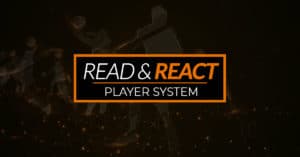The following article is written by Spencer Wood.
Click here to read Part 1!
Now let us add the additional steps today to complete the process. Once a plan has been established, the remaining keys are to create what I call ‘time triggers.’ I encourage athletes to set two types of daily time triggers. The first time trigger is intuitive/obvious and is simply the need to establish a consistent workout time. A lack of consistency with established work out times often dooms the Summer improvement plan to failure. The second type of time trigger is rarely used by athletes, yet is invaluable to establish the type of intensity and focus we need in order to get everything out of a workout. We are all aware of the difference between ‘playing at practice’ and truly ‘practicing to improve.’
In a similar manner, there is a huge difference between athletes who are waiting for practice to start vs. preparing for practice to start. Many of the athletes who do get some practice time and/or some conditioning time in over the Summer sometimes go through the motions, yet give themselves a mental pat on the back that they have shown great dedication – when they clearly have not. The key to be focused, motivated and mentally prepared for the intensity of an off-season ‘improvement’ type practice is to go through an emotional shift immediately before that practice. This is the single greatest key to the entire process (of course, other than actually showing up at the gym/field/court/track etc!). The emotional shift should be triggered by the same event each day, such as setting down the gym bag. As soon as the bag touches the floor, bleaches, chair or bench, the athlete tells himself/herself that the focus process has begun, and everything else going on in their life now becomes secondary to the need of shifting the mind and elevating the emotions for the intensity of the task at hand. This time trigger can be facilitated by using one or more of the following three activities:
- a) The athlete briefly re-reading his/her greatest hopes and fears for the coming year
- b) The athlete briefly re-reading his/her goals that have been set for the Summer
- c) The athlete playing a particular song or piece of music that just seems to stir and elevate the soul every time the athlete hears that song. The song could be played on an ipod or similar device. The end of the song signifies the last time trigger…that it is now “go time!”
The result of this simple process is an athlete who is well aware of his/her greatest hopes/fears, well aware of the clearly defined goals for the practice session and for the entire summer (remember goals should be ‘SMARTER’ or Specific, Measurable, Attainable, Relevant, Timebound, Exciting and Rewarding), and an athlete who locks into an emotional shift for the necessary motivation and intensity to take that practice to the next level.
In summation, it is challenging at best to get athletes to dig deep over the off-season to work on strength, speed, agility, quickness, physical/mental skills and conditioning improvements. An athlete’s commitment can be undermined by the freedom of those off-season months, in addition to the numerous distractions that are available to the athlete. I know the following cliché is nauseatingly common, but it certainly holds true when it comes to off-season workouts…if you fail to plan then you plan to fail. This plan involves a number of key steps that when executed consistently will help the athlete to create a plan, provide workout direction and consistency, and just as importantly, access their motivational rocket fuel!






